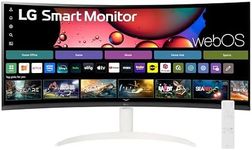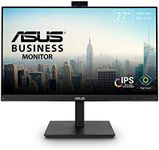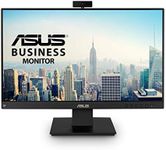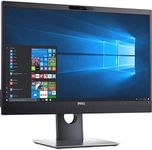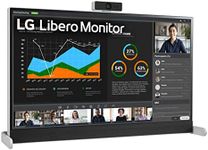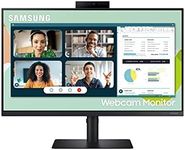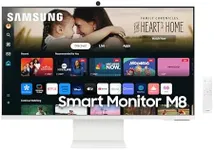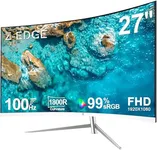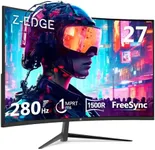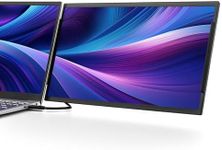Buying Guide for the Best Computer Monitor With Webcam
Choosing the right computer monitor with a built-in webcam can significantly enhance your productivity, video conferencing experience, and overall comfort. To make an informed decision, it's important to understand the key specifications and how they align with your specific needs. Here are the essential specs to consider when selecting a computer monitor with a webcam.Screen SizeScreen size refers to the diagonal measurement of the monitor's display area, usually measured in inches. This spec is important because it affects how much screen real estate you have for multitasking and viewing content. Smaller screens (20-24 inches) are suitable for basic tasks and limited desk space, while medium screens (25-27 inches) offer a balance between workspace and comfort. Larger screens (28 inches and above) are ideal for immersive experiences, gaming, and professional work that requires detailed visuals. Choose a size that fits your desk space and meets your usage needs.
ResolutionResolution indicates the number of pixels on the screen, typically represented as width x height (e.g., 1920x1080). Higher resolution means more detail and sharper images. Common resolutions include Full HD (1920x1080), Quad HD (2560x1440), and 4K (3840x2160). Full HD is sufficient for general use and basic tasks, Quad HD offers better clarity for professional work and gaming, and 4K provides the highest detail for creative professionals and those who want the best visual experience. Select a resolution that matches your work requirements and visual preferences.
Webcam QualityWebcam quality is determined by its resolution and frame rate, which affect the clarity and smoothness of video calls. Common resolutions include 720p, 1080p, and 4K. A 720p webcam is adequate for basic video calls, while a 1080p webcam offers better clarity for professional meetings and streaming. A 4K webcam provides the highest quality for detailed video conferencing and content creation. Consider your video conferencing needs and choose a webcam resolution that ensures clear and professional communication.
Refresh RateRefresh rate is the number of times the screen updates per second, measured in Hertz (Hz). This spec is important for smoothness in motion and reducing eye strain. Standard monitors have a refresh rate of 60Hz, which is sufficient for everyday tasks and basic video playback. Higher refresh rates, such as 75Hz, 120Hz, or 144Hz, are beneficial for gaming, video editing, and other activities that involve fast-moving visuals. Choose a refresh rate that aligns with your primary use case to ensure a comfortable viewing experience.
Panel TypePanel type affects the monitor's color accuracy, viewing angles, and response time. The most common types are TN (Twisted Nematic), IPS (In-Plane Switching), and VA (Vertical Alignment). TN panels have fast response times and are suitable for gaming but have limited color accuracy and viewing angles. IPS panels offer excellent color accuracy and wide viewing angles, making them ideal for professional work and general use. VA panels provide good contrast and color reproduction, suitable for multimedia consumption. Choose a panel type based on your priorities, such as color accuracy for design work or response time for gaming.
Connectivity OptionsConnectivity options determine how you can connect your monitor to your computer and other devices. Common ports include HDMI, DisplayPort, USB-C, and VGA. HDMI and DisplayPort are widely used for high-definition video and audio, while USB-C offers versatile connectivity and power delivery. VGA is an older standard, suitable for legacy devices. Ensure the monitor has the necessary ports to connect to your computer and any additional peripherals you may use, such as external storage or docking stations.
ErgonomicsErgonomics refers to the monitor's adjustability features, such as height, tilt, swivel, and pivot. These features are important for creating a comfortable and healthy workspace, reducing strain on your neck and eyes. A monitor with good ergonomic options allows you to adjust the screen to your preferred viewing position, promoting better posture and comfort during long hours of use. Consider your workspace setup and choose a monitor with the necessary ergonomic adjustments to suit your needs.
Built-in SpeakersBuilt-in speakers provide audio output directly from the monitor, eliminating the need for external speakers. This spec is important for convenience and saving desk space. The quality of built-in speakers can vary, with some offering basic sound suitable for video calls and casual listening, while others provide better audio quality for multimedia consumption. If audio quality is important to you, consider monitors with higher-quality built-in speakers or plan to use external speakers or headphones.


